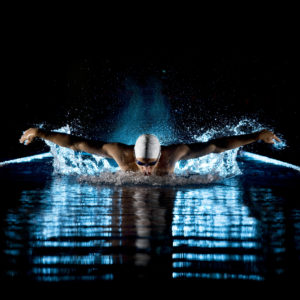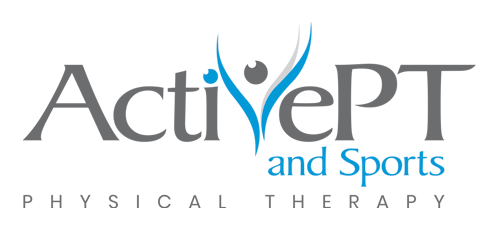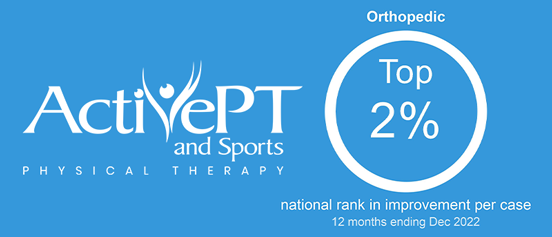
SHOULDER PAIN DOESN’T HAVE TO KEEP YOU OUT OF THE POOL
It is a well known fact that shoulder pain is the most common type of injury for swimmers, but do you know why? Let’s take a step back and look at the big picture. First, swimming is one of the only sports where the shoulders propel the body. Second, if the average swimmer completes 14 strokes per 25 yards, 6,000 yards per practice, and swims 5 days per week, that equates to 13,440 revolutions of the shoulder. Finally, the freestyle stroke itself places the shoulder in a pinched position 25% of the stroke cycle. This, combined with a strength imbalance between small and large muscles, puts a swimmer’s shoulder at risk for injury and pain.
SWIMMING-SPECIFIC STRENGTHENING
Strengthening for swimmers is essential for injury prevention. To maximize stroke speed and reduce the risk of shoulder injury, three critical elements are necessary in exercise selection: exercise position, strengthening through the full arc of motion, and stabilization. To best imitate the demands of the sport, swimming-specific exercises should be performed in a face-down position whenever possible. This can be performed with an exercise ball under the abdomen, on an ottoman, or a bed. Your head, shoulders and arms should extend past the supporting surface to recruit shoulder and trunk muscles.
Next, swimming-specific exercises should address the various demands from each phase of your stroke cycle. Strengthening exercises that only address the mid-portion of the catch phase will not result in optimal speed through your full stroke. Ensure you are performing strengthening exercises that move the shoulder to end range position, rather than stopping short of the end.
Stabilization and perturbation are two of the most important words for injury prevention of a swimmer’s shoulder. Swimmers’ shoulders adapt to the stroke over time and often become overly mobile. Without learning to control this increased mobility, a swimmer’s shoulder often becomes painful. The shoulder joint is inherently unstable without the help of small stabilizing muscles, called the rotator cuff. These muscles should be uniquely trained, as their primary job is to keep the shoulder stable when pulling your body through the water. When the rotator cuff muscles are unequally strong or overpowered by the larger deltoid muscles, shoulders develop pain and problems. Stabilization exercises focus on the small movements, not the large movements, and are a critical part of a swimmer’s strengthening and injury prevention program. Perturbation training is another critical part of a swimmer’s training. This type of exercise is performed by attempting to maintain the arm’s position while force is applied to the arm. Think of perturbations like someone knocking you around, but you are strong and stable enough that you never move. Try this exercise with a partner: get on your hands and knees on the floor, tighten all your muscles to try to prevent any movement as another person attempts to push you in various directions.
[su_youtube url=”https://www.youtube.com/watch?v=lctNPbcwH88&t=92s”]
THE ALL-IMPORTANT SPINE MOVEMENT
The thoracic spine is the middle portion of your spine between your shoulders and low back. This portion of your spine is responsible for most of your ability to rotate or twist. Freestylers and backstrokers improve efficiency with a long body roll. This results in maximum power in the catch phase of the stroke. If your trunk rotation is limited, you will not achieve a long body roll and your shoulder will take on the additional stress.
With the unique demands of the sport, incorporating a swimming-specific strengthening program in your dry land routine is one of your best tools to reduce the risk of shoulder injury. A comprehensive program should include full arcs of motion, stabilization, perturbation, and address the thoracic spine. Adding specific strengthening exercises that reduce the risk of injuring your shoulders will promote longevity in the sport, and help you reach your goals in the water.
Courtney Hilmanowski PT, DPT,OCS is a swimming and shoulder specialist at ActivePT in Rochester, MN. She is a former Division 1 swimmer at the University of Minnesota and Wisconsin state record holder in the 500 freestyle. As a distance freestyle specialist, she is no stranger to shoulder pain. After undergoing her own shoulder injury and rehab, she understands the importance of specific and effective strengthening that combat the demands of high level swimming.
You now have access to our experts through a live video visit. Contact our swimming specialist, Courtney Hilmanowski PT, DPT, OCS or call 507-322-3460.



